New Evolved V6 Diesel Engine for the Citroen C5 and C6
With the arrival of the new V6 DPFS 240 engine, the Citroen C5 & C6 offer a « win-win » situation. C5 & C6 DPFS 240 herald a new dawn in terms of customer satisfaction, with the promise of pleasure, quiet operation and good performance. The improvements offer a significant reduction in fuel consumption and reduce CO2 emissions by between12 and 15%.
The most powerful Diesel in the history of the Marque gives the two saloons in the range qualities which further strengthen its universally recognised appeal.
To achieve this level, the V6 Diesel engine has evolved significantly. Its capacity increases to 3 litres and it has benefitted from several improvements : a new 3rd generation direct common-rail injection system ; new generation combustion chambers, turboparge ensured by a system with 2 turbocompressors of variable geometry, exhaust gas recirculation and a system which recovers energy during deceleration. The power output is now 177 kW (or 240 ch CEE) an increase of 18% with a maximum torque of 450 Nm at 1,600 rpm. Still fitted with an 6 speed automatic gearbox, the fuel consumption on combined cycle of the two cars is just 7.4 l/100 km and their CO2 emissions are only 195 g/km, a decrease of between12 and 5%. These engines fully comply with the future Euro V emission standards.
« With this engine, the C5 and C6 V6 DPFS 240 are now at the highest levels within their respective segments, with an engine worthy of the most renowned specialist manufacturers » declared Jean-Marc GALES, Managing Director of Citroen.
SURPRISING BENEFITS, BOTH FOR THE CUSTOMER AND THE ENVIRONMENT
The modifications made with the adaptation of the V6 DPFS 240 engine give spectacular benefits in terms of driving pleasure at the same time as giving a significant reduction in fuel consumption and CO2 emissions.
This new engine develops 177 kW (or 240 ch CEE) at 3 800 rpm, up by 18%.
It has a maximum torque of 450 Nm. This guarantees a tremendous driving pleasure in every day driving and it offers a number of remarkable aspects :
• Its maximum value of 450 Nm is constant from 1,600 to 3 600 rpm - a range that corresponds with the primary use of the vehicle.
• It is greater than 400 Nm al the way from 1,400 and 4,100 rpm
• Its value, at 1,500 rpm, is 422 Nm, 17% higher than the engine it is replacing, a guarantee of even more effective performance
These caracteristics translate into significantly improved perfomance : a higher maximum speed, excellent acceleration (0 to 100 km/h in 7,9 and 8,5 seconds for C5 and C6 respectively – the km standing start in 28.5 and 29 seconds respectively) and 80 to 120 km/h in 4.9 et 5.2 seconds.
Consequently, there is a net reduction in fuel consumption. The combined fuel consumption cycle figure is 7.4 litres per 100km for the two models with CO2 emissions of 195g/km. This represents a reduction of 12% in the C5 and 15% in C6 confirming once again Citroen's environmental credentials.
In the French market this evolution allows a saving of 850 € in ‘bonus-malus' and a significant reduction in TVS (Taxe sur les Vehicules de Societe).
THE V6 DPFS 240 ENGINE : THE HEART OF THE EVOLUTION
It is clear that the net progress on these vehicles is principally due to the modifications carried out on the engines.
Significant evolutions have been adopted to allow them to reach a level which is class leading today.
Capacity increased to 3 litres
Principally the capacity is increased from 2721 to 2993 cm3 by increasing both the bore and stroke. This improvement places the C5 & C6 at the heart of the V6 Diesel market.
3rd generation common-rail system
Fuel supply remains the common-rail system, as it is for all DPFS engines. What's new is the fact that this 3rd generation system utilises injection pressures of up to 2000 bars compared to 1650 previously. Injectors have 8 holes as opposed to 6 allowing even better atomisation in the cylinders and it can still achieve up to 5 injections per cycle : one or two pilot injections, two principal injections and one post-injection for the particulate filter system.
These allow better fuel atomisation for improved combustion. As a result this reduces noise and allows treatment of pollutants « at source ».
Piezoelectric injectors are utilised mounted at the centre to reduce their emissions. In addition the injection pump only delivers the fuel necesary for the operation of the engine, thus reducing the volume of fuel returned to the tank which in turn allows a reduction in the temperature of the fuel and optimises the energy.
These various improvements have produced improved engine reactivity and a reduced consumption and as a result reduced CO2 emissions.
In addition, these modifications give way to less combustion noise, for even better acoustic comfort.
The new generation combustion chamber
The ECCS technology (Extreme Conventional Combustion System) applied to the 2.2 DPFS 173 engine is again present in the new V6 Diesel.
This technology comprises of several parts :
• optimal geometry for the desired level of power, compatible with the desired level of depollution
• exceptionally durable alloy pistons, cooled by oil
• a decreased compression ratio (16.1 instead of 17.3) which is beneficial for performance and allows a reduction in NOx emissions
• a larger bore (84 mm instead of 81) reduces the volume of unburnt fuel due to less contact with the walls
• a smoother cylinder head (of around10%) for improved air circulation in the engine (improved comsumption by reducing transfer losses and improved refilling)
• a reduction in swirl (air movement phenomenon in the combustion chamber) of around 10%, limiting thermic losses against the walls
• adoption of new pre-heating ceramic plugs at very high temperatures (1300° C) for an improved compatibility at low temperatures (used in post heating after start up) a reduction in cold engine emissions and an improved pre-heating time allowing a rapid start up at very low temperatures (-25° C, the preheating time is reduced from 12 to 2.5 seconds).
By employing better homogeneity and improved combustion, these developments make for a very sensitive and improved output, reduced pollutant emissions (particles, NOx) and a reduction in combustion noise.
2 variable geometry Turbochargers
The parallel bi-turbo design is continued with the 3 litre version. These caracteristics have been finely tuned to provide the customer with even greater driving pleasure.
The two turbochargers have an identical function and each one feeds a line of 3 cylinders. It is principally the turbine which was the intended subject of evolution aiming to improve its output with low flow (reduction of inertia, optimisation of internal aerodynamics) in order to improve the flow at low speed. The optimum filling at high speed with a maximum speed capable of reaching 250,000 rpm instead of 230,000, contributes to the increased performance compared to the 2.7 litre model. The maximum supercharge pressure is1.4 bars (2.4 at the highest). The actuation of the variable geometry is carried out with high precision, via an electric motor which responds to the driver in less than 100 ms, this leads to possible variations in engine load from 0 to 100 % in less than 500 ms.
These developments create an unrivalled feeling of control with an availability of instantaenous torque at all speeds and in a smooth manner. This also allows the driver to use low engine speeds which also entails reduced consumption.
A new system of tyreating exhaust gases
This engine offers a new Exhaust Gas Circulation (EGR) in which the thermal capability of the fuel / water exchange ris improved by 40%.
It is comprised of electric blades as well as a pneumatic control of by-pass valve both controlled by the engine control unit. Also the functioning of the EGR responds in the optimal manner and without compromising the regulatory demands whilst offering the customer the best results in terms of performance and durability.
With a cold engine, the by-pass allows circulation through the exchanger, to limit the condensation of soot caused by the combustion, therefore the unburnt hydrocarbon emissions and allows a more rapid increase in engine temperature and reduced combustion noise and overall improvement. With a hot engine, the by-pass is closed and the exhaust gas crosses the exchanger with increased power, thus offering a net advantage in terms of reduced consumption and emission of nitrogen oxide.
An energy recovery system
This engine is fitted with an alternator which recovers energy during deceleration and braking.
The batteries can therefore partially recharge themselves without need to rely on supplementary energy.
Meeting future Euro V standards
This engine meets the required standards and already, the future Euro V standard which will be obligatory in January 2011 in production vehicles. These evolutions in the common-rail system and the EGR system have allowed the standards to me met.
The exhaust system still incorporates oxydising catalysts and a particulate filter. The maintenance period will henceforth be determined by the engine calculator, which registers the actual conditions of use and is to the order of 260,000 km. The user is alerted, as for periodic services, by a message appearing on the dashboard.
The exhaust system, with 2 separate pipes on either sides of the vehicle, comprises a larger transversal silencer, for dual benefit : lower noise and a reduction in charge losses for even better performance.
COMPLEMENTARY EVOLUTIONS FOR OPTIMUM EFFICIENCY
In addition to the engine improvements, several other evolutions have been introduced to these 2 models to improve the vehicle overall.
The size of the front brake discs have been increased from 330 to 340 mm to offer similar efficiency bearing in mind the improved performance.
A variable capacity steering pump is fitted to provide just the correct asssistance necessary to minimise consumption, whilst the steering retains the continuously variable power system.
A piloted alternator is fitted which, as well as recovering energy during deceleration, only charges when necessary, to the benefit of fuel consumption and emissions.


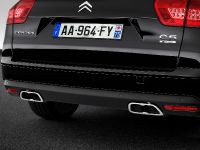
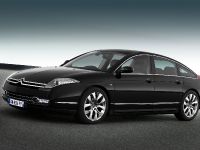
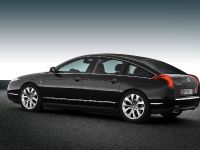
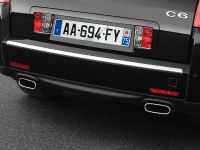
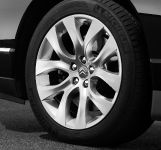
![Citroen DS9 Might Be Coming Our Way [TEASER]](http://www.automobilesreview.com/uploads/2012/03/Citroen-DS-teaser-big.jpg)






